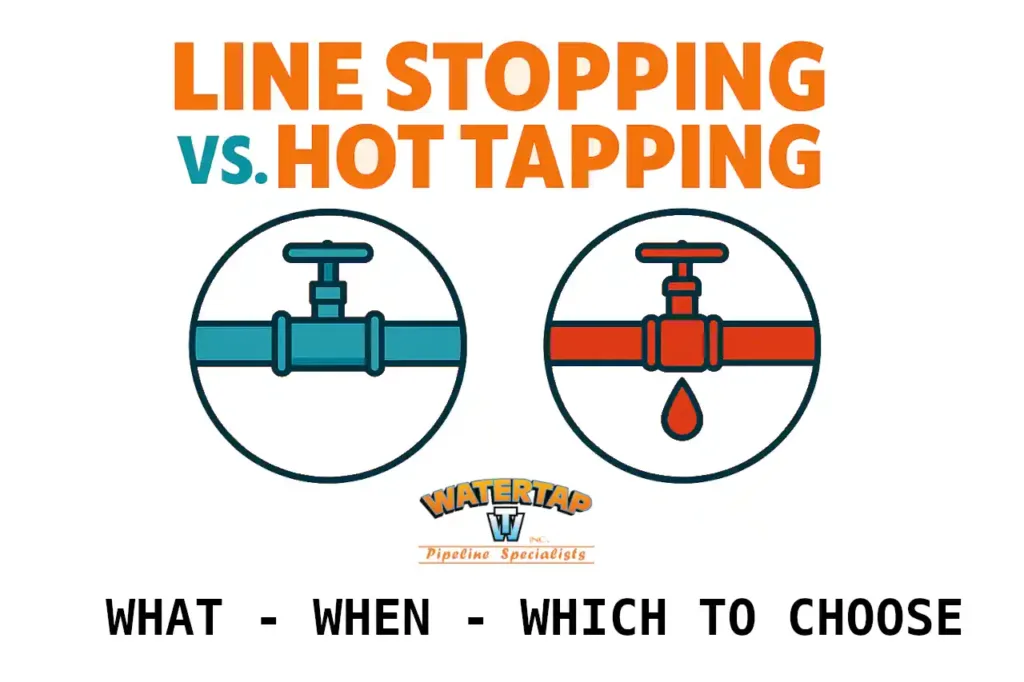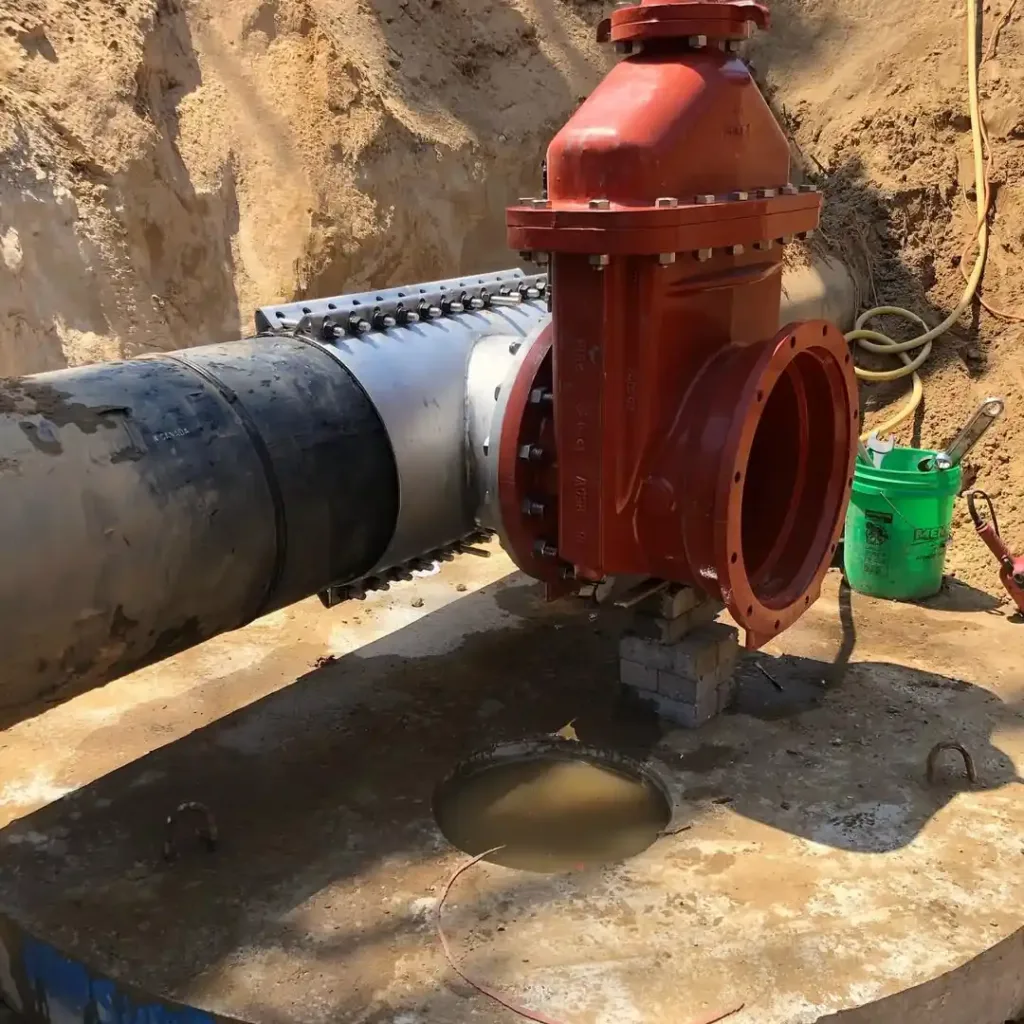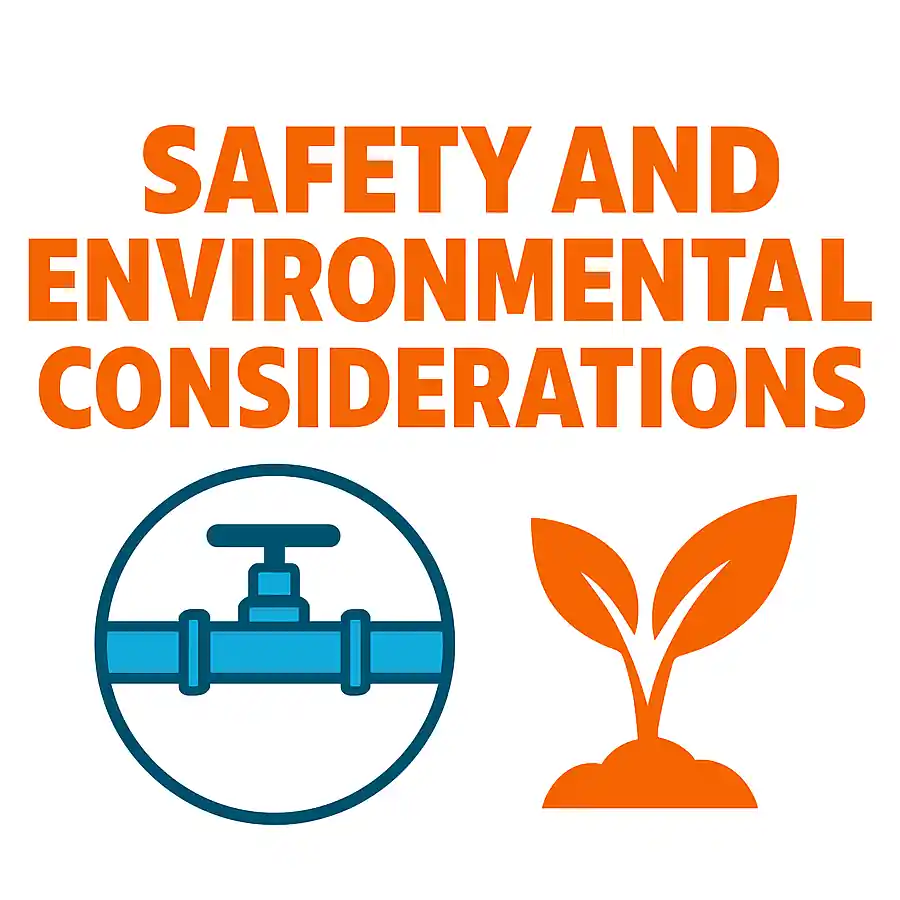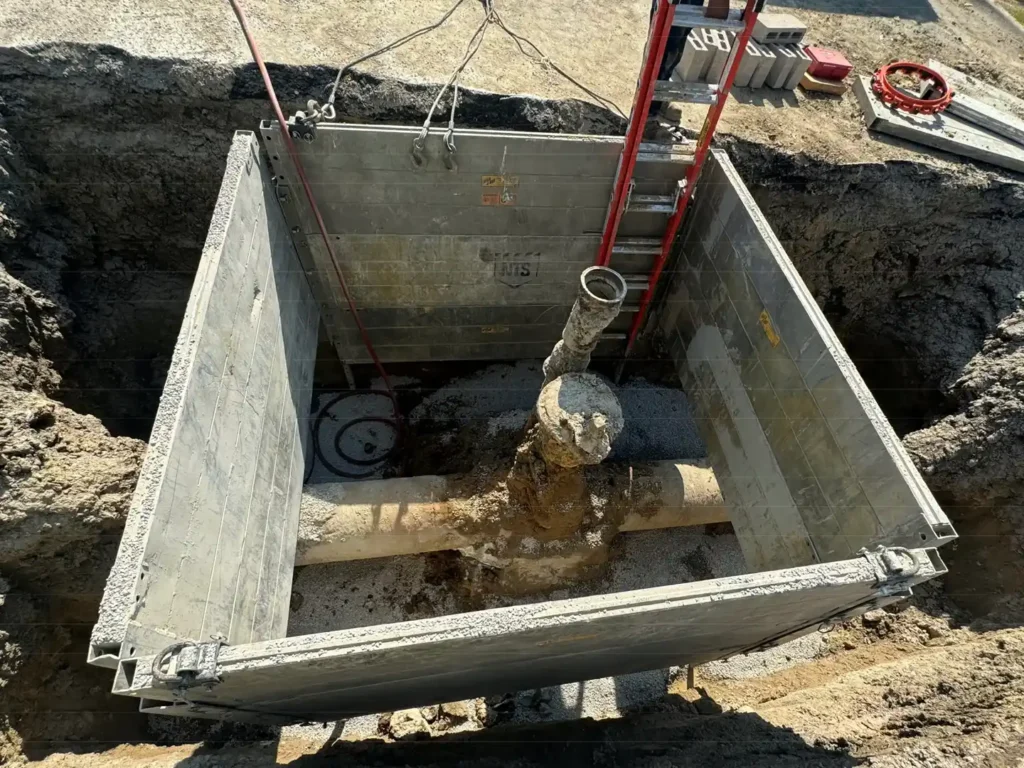
Aging pipelines can’t wait for repairs—but neither can the communities and industries that rely on them. Whether you’re managing a municipal water system, an industrial facility, or a construction project, maintaining pipeline integrity without disrupting service is a top priority. That’s where Watertap Inc. comes in, offering two powerful solutions: line stopping and hot tapping. But what’s the difference between line stopping vs. hot tapping, and how do you know which method is right for your project? In this guide, we’ll break down both techniques, explore their applications, and help you make an informed decision—with Watertap’s 25+ years of expertise to guide you every step of the way.
Understanding Line Stopping: Watertap’s Approach

Line stopping is a non-disruptive method that allows you to isolate a specific section of a pipeline while keeping the rest of the system operational. This technique is ideal for situations where you need to perform maintenance or modifications without shutting down the entire pipeline.
Here’s how it works: After assessing the pipeline, Watertap’s team taps into the pipe and inserts a stopping head—often using advanced equipment like Hydra-Stop’s HSF 250 Patriot Line Stop system—to block flow in the targeted section. If needed, we set up a temporary bypass to ensure continuous service to the rest of the system. Once the work is complete, the stopping head is removed, and the pipeline is restored to full operation.
Line stopping is commonly used for:
- Emergency repairs, such as fixing a burst water main.
- Valve replacements or insertions on live systems.
- System modifications, like rerouting a pipeline section.
At Watertap Inc., we’ve perfected this process over decades, handling pipe sizes from 1.5″ to 66″ and materials like ductile iron, HDPE, and prestressed concrete cylinder pipe (PCCP). Our focus on precision and minimal disruption ensures your project stays on track. For a deeper dive into line stopping, including its benefits and applications, check out our complete guide to line stopping.
Understanding Hot Tapping: Watertap’s Approach

Hot tapping, also known as live tapping, allows you to create a new connection on an operational pipeline without stopping the flow. This method is perfect for expanding or upgrading a system while keeping it live, avoiding costly downtime
The process involves attaching a fitting to the pipe, installing a valve, and using a tapping machine to cut a hole into the pipeline—all while it remains under pressure. Once the cut is made, the valve is closed, and the new connection is ready for use. Watertap’s hot tapping services are compatible with a wide range of materials, including asbestos concrete, C900, cast iron, and prestressed concrete, making it a versatile solution for diverse projects.
Typical applications for hot tapping include:
- Adding a new branch line to expand a municipal water system.
- Installing monitoring equipment, such as pressure gauges.
- Creating sampling ports for water quality testing.
Watertap’s expertise ensures hot tapping is done safely and efficiently, with environmental benefits like reduced water waste. By avoiding shutdowns, we can save clients over 40% in costs compared to traditional methods. Learn more about our hot tapping capabilities on our Live Taps service page.
Contact Us Today For A Free ConsultationLine Stopping vs. Hot Tapping: How They Differ
When comparing line stopping vs. hot tapping, the key difference lies in their purpose and application
- Purpose: Line stopping isolates a section of the pipeline, stopping flow in that area to allow for repairs or modifications. Hot tapping creates a new connection, adding access to the system without interrupting flow.
- Operations: Line stopping uses a sealing element (like a stopping head) and often requires a bypass to maintain service. Hot tapping involves a cutting tool and valve to tap into the live pipeline, with no need to stop flow.
- Situational Fit: Line stopping is best for maintenance tasks that require isolation, such as fixing a leak or replacing a valve. Hot tapping is ideal for expansions or upgrades, like adding a new branch line or monitoring point.
Understanding these differences is the first step in choosing the right method for your project. Let’s explore when each technique shines.
When to Choose Line Stopping
Line stopping is the go-to solution when you need to isolate a pipeline section for maintenance or modifications without disrupting the entire system. Common scenarios include:
- Urgent Repairs: A leaking water main threatens a city’s supply, and you need to isolate the damaged section quickly.
- Valve Insertions: Replacing or adding a valve (e.g., using Watertap’s Insta-Valve Plus) on a live system to improve flow control.
- System Modifications: Rerouting a pipeline section while keeping the rest of the system operational.
The benefits of line stopping are clear:
- Safe Working Conditions: Isolating the repair area ensures technicians can work without risk from live flow.
- Minimal Disruption: Temporary bypasses keep service running for the rest of the system.
- Cost-Effective for Emergencies: Avoids the expense of draining or shutting down the entire pipeline.
Watertap’s 24/7 emergency response sets us apart, as demonstrated in our Denton, Texas project. We performed a 16-inch line stop to replace a gate valve, collaborating with the City of Denton and Thompson Pipe Group, ensuring uninterrupted water service for the community.
When to Choose Hot Tapping
Hot tapping is the ideal choice when you need to add a new connection to a live pipeline without stopping operations. It’s perfect for projects like:
- System Expansions: Adding a new branch line to a municipal water system to support population growth.
- Monitoring Equipment: Installing pressure gauges or flow meters on an industrial pipeline.
- Future Access Points: Creating sampling ports for water quality testing without downtime.
Hot tapping offers several advantages:
- No Flow Interruption: Keeps operations running, avoiding downtime costs.
- Cost Savings: Reduces expenses by eliminating the need for shutdowns or extensive excavation.
- Flexibility: Adapts pipelines to new demands, such as increased capacity or monitoring needs.
Watertap’s hot tapping services prioritize efficiency and environmental responsibility. By minimizing water waste and contamination risks, we help clients meet sustainability goals while keeping projects on budget.
Safety and Environmental Considerations
Both line stopping and hot tapping are performed on live pipelines, so safety is paramount. Watertap adheres to strict protocols, including:
- Pressure testing and monitoring to prevent leaks or failures.
- Using high-quality fittings and seals, such as JCM Industries products, for reliability.
- Compliance with industry standards, as reflected in our membership with the Michigan Infrastructure and Transportation Association (MITA).
Environmentally, both methods reduce water waste compared to traditional shutdowns—a key advantage for municipalities and industries aiming to minimize their ecological footprint. Watertap’s focus on sustainability ensures your project aligns with green initiatives while maintaining operational efficiency.

Watertap in Action: Real-World Solutions
Seeing these methods in action can help you understand their impact. Here is an example of how Watertap has used line stopping and hot tapping to solve pipeline challenges:
Line Stopping Success in Denton, Texas: When the City of Denton needed to replace a 16-inch gate valve on a critical water main, Watertap stepped in with a line stopping solution. Using a JCM 445 line stop fitting, we isolated the section and completed the replacement without disrupting service to the community. The project was a testament to our expertise in non-disruptive pipeline maintenance, as detailed in our blog post.

Line Stopping in Denton, Texas – Successful Repair With Uninterrupted Water Service
Maintaining critical water infrastructure without disrupting service requires experience, expertise, and advanced techniques. With over 20 years of experience in […]
Read MoreWhich Method Is Right for Your Project?
Choosing between line stopping vs. hot tapping depends on your project’s goals, timeline, and pipeline conditions. Here’s a quick guide to help you decide:
| Factor | Line Stopping | Hot Tapping |
|---|---|---|
| Project Goal | Isolate a section for repairs or changes | Add a new connection without stopping flow |
| Urgency | Ideal for emergencies (e.g., leaks) | Best for planned expansions or upgrades |
| Pipe Material | Works on ductile iron, HDPE, PCCP, etc. | Compatible with asbestos concrete, C900, etc. |
| Budget | Cost-effective for urgent fixes | Saves on downtime costs for expansions |
Still Unsure? Ask Yourself:
- “Do I need to stop flow in a specific section for repairs?” If yes, line stopping is likely the answer.
- “Do I need a new connection without shutting down the system?” If so, hot tapping is the way to go.
For a more tailored recommendation, Watertap offers free consultations to assess your pipeline needs and recommend the best solution. Contact us today to get started.
Why Choose Watertap Inc. for Your Pipeline Needs?
With over 25 years of experience, Watertap Inc. is a trusted leader in pipeline maintenance across Michigan and the continental United States. Here’s why clients choose us:
- Expertise: We’ve mastered both line stopping and hot tapping, handling projects of all sizes with precision.
- Advanced Tools: From Hydra-Stop systems to Insta-Valve Plus, we use state-of-the-art equipment for reliable results.
- 24/7 Availability: Our team is ready to respond to emergencies anytime, ensuring minimal disruption.
- Customer Focus: We prioritize communication, safety, and cost-effectiveness.
As a member of the Michigan Infrastructure and Transportation Association (MITA), Watertap upholds the highest industry standards, giving you peace of mind for every project.
Contact Us Today For A Free ConsultationFinally
When it comes to pipeline maintenance, line stopping and hot tapping offer powerful solutions to keep your system running without costly shutdowns. Understanding the differences between line stopping vs. hot tapping is key to choosing the right method for your project—and Watertap Inc. is here to help. Whether you need to isolate a section for repairs or add a new connection without downtime, our team has the expertise and tools to get the job done. Don’t let pipeline challenges disrupt your operations—contact Watertap Inc. for a free consultation today!
